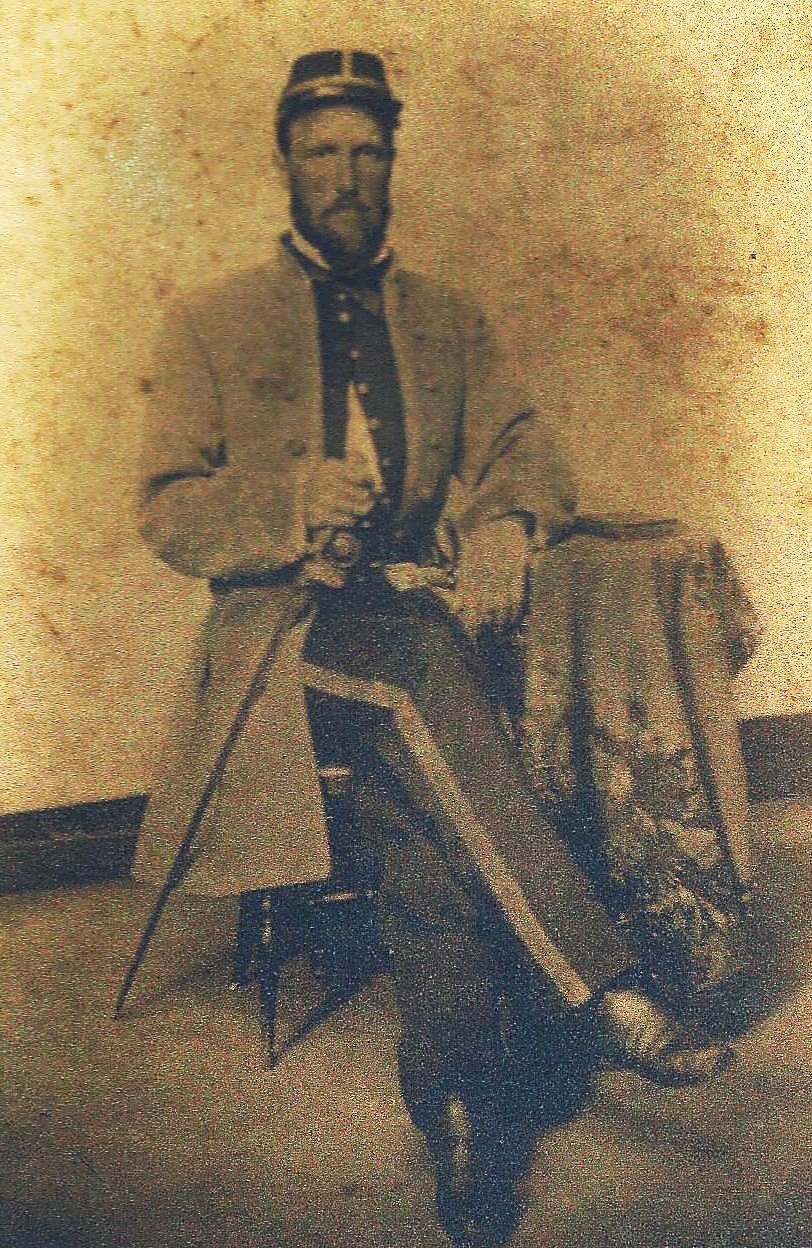More Bracken's Boys - Company A, 7th Kentucky Mounted Infantry Battalion
Bart W. Jenkins
We have identified the definitive Bracken County Union unit in a previous post (the 16th Kentucky Infantry), but what would be the equivalent unit from the county on the Confederate side? It would have to be Company A of the 7th Kentucky Mounted Infantry Battalion, commanded by Captain Bart W. Jenkins. There are fifteen men who served in this company buried in Bracken County.
As late as June 1864 Bracken County men were joining the Confederate Army. The wave of recruiting happened to coincide with John H. Morgan’s Last Kentucky Raid and Bracken men took advantage of the close proximity of Morgan’s command to enlist (Morgan having fought at Cynthiana on June 11th and 12th, and having passed as close as five miles south of Milford before passing through Mt. Olivet, Sardis, and May’s Lick, before turning southeast and fleeing into western Virginia).
I could not help but question why these men would join the Confederate cause so late in the war? The war was not going well for either side in June 1864, with Union grand offensives in both the Eastern and Western Theaters somewhat stymied but still putting the Confederate armies on the defensive. Without first hand accounts such as letters from these men we do not know what motivated them to join what was already a long and bloody war, but also a war that was beginning to hear the death knell of the South. Kentucky itself, while rampant with roaming guerilla bands during this time, was lost to the Confederacy in the fall of 1862 with no real chance for the Confederacy to bring the Bluegrass State under its control. Morgan’s brief appearance in the Kentucky in 1864 gave a slight boost to the morale of southern leaning men in the state, but it certainly would not lead to any long term occupation, and by June 15th, when these Bracken County men joined (according to Confederate Kentucky Volunteers War 1861-65), Morgan had already been whipped badly at Cynthiana, and these new recruits must have known that result. Also, by the 15th, Morgan’s remnants were miles from southern Bracken County. Perhaps, due to shoddy Confederate record keeping during this part of the war, these men had actually joined before the Cynthiana debacle and were not mustered into service until a few days later.
There is one other possibility as to when these men joined - Morgan, while near Mt. Sterling earlier in the raid, had dispatched a small force under the command of Captain Peter M. Everett to take Maysville then make a move on Newport. This detachment would not make it to Newport, and it would rejoin Morgan’s command prior to the Cynthiana fight. As they moved from the Maysville area towards Cynthiana, they could have very well recruited men from Bracken County.
Records of the 7th Mounted Infantry Battalion are sketchy at best, so it can be difficult to piece together what happened to the men while in Company A. However, when these men actually joined has now been corrected - according to their individual service records they had actually enlisted on June 10th and mustered in the next day at Frankfort. A portion of Morgan’s force, under command of Bart W. Jenkins, was operating near the Kentucky capital, having been sent there to destroy the railroad, so the dates on the service records coincide. Mystery solved!
After Cynthiana these men would retreat into Virginia where they would continue to serve, fighting at Saltville on October 2, 1864. When Lee’s army surrendered the following April, most of the Kentucky men from Henry L. Giltner’s Brigade, of which Company A was a part, accompanied him to Mt. Sterling, Kentucky where they were surrendered April 30, and later paroled to their homes on May 10, 1865.
The men of this company who are buried in Bracken County are as follows - Robert T. Anderson, Robert B. Breeze, Charles G. Case, William H. H. Case, Robert Coleman, Charles H. Colvin, Levi A. Colvin, Thomas L. H. Corlis, John W. Dugan, Vincent A. Hamilton, Charles L. Holton, Evan T. Howard, John B. Lenox, John W. Rice, and Harry P. Willis.

